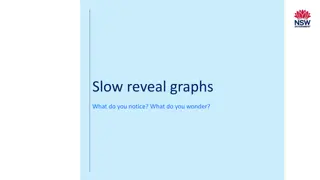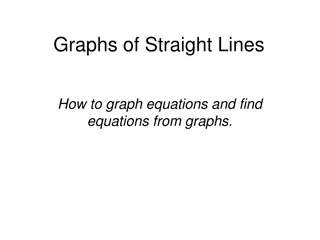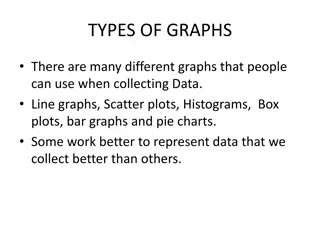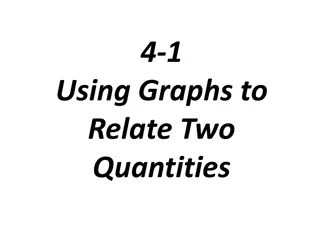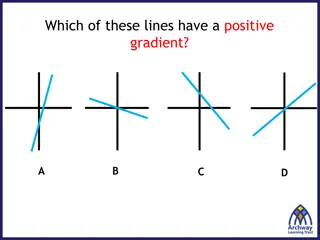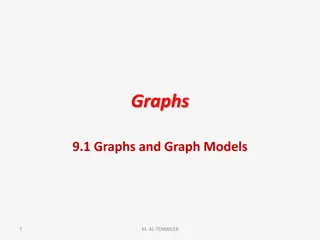Block Graphs: Examples and Explanations
A block graph visually represents discrete data in a collection of blocks with no gaps between them. Each block must be carefully drawn with a title and axes labeled to explain the data shown. Examples include surveys on favorite activities, zoo animal sightings, and chocolate wrapper colors. Learn how to interpret block graphs and answer related questions based on the data presented.
Download Presentation

Please find below an Image/Link to download the presentation.
The content on the website is provided AS IS for your information and personal use only. It may not be sold, licensed, or shared on other websites without obtaining consent from the author.If you encounter any issues during the download, it is possible that the publisher has removed the file from their server.
You are allowed to download the files provided on this website for personal or commercial use, subject to the condition that they are used lawfully. All files are the property of their respective owners.
The content on the website is provided AS IS for your information and personal use only. It may not be sold, licensed, or shared on other websites without obtaining consent from the author.
E N D
Presentation Transcript
Block Graphs What does a block graph show? A block graph is a collection of discrete data (values that have no in- between data) that has been input into a visual graph, represented in blocks. What must a block graph have? A block graph must always have a title explaining what it shows. Blocks must be carefully drawn to show the data. There must be no gap between each bar. Each bar must be the same width.
Block Graphs How do you represent the data in a block graph? A number line is marked on the vertical axis (y). The scale of this number line is chosen based on the data range. The data categories are organised on the horizontal axis (x). Each axis must have a label explaining what it shows.
Block Graphs Class A carried out a survey about their favourite activities. They recorded the data in this block graph. Which was the most popular activity? Hockey was the most popular activity Class A s Favourite Activities Which was the most popular activity? How many more children like hockey than netball? How many more children like hockey than netball? 5 children Children How many fewer children prefer swimming than football? swimming than football? 4 children How many fewer children prefer True or false? Class A has 32 children in total. Explain how you know. True or false? Class A has 32 children in total. Explain how you know. False. 7 + 5 + 10 + 5 + 3 = 30. Activities
Block Graphs Class B went to the zoo. They recorded how many zoo animals they saw using a block graph. Which was the most common animal? snake Which was the most common animal? Zoo Animals How many more snakes than giraffes were there? How many more snakes than giraffes were there? 10 more snakes than giraffes Number of Animals Seen How many fewer zebras than snakes were there? there? 6 fewer zebras than snakes. How many fewer zebras than snakes were True or false? Class B s most common animal was the snake and the least common was the rhino. Explain your answer. False. The most common animal was the snake but the least common was the giraffe as they saw 4 rhinos and 2 giraffes. True or false? Class B s most common animal was the snake and the least common was the rhino. Explain your answer. Animals
Block Graphs Sam had a box of chocolates. She recorded the chocolate wrapper colours in a table and created a block graph of her data. Which was the most common chocolate wrapper colour? Orange Which was the most common chocolate wrapper colour? How many more orange wrappers than green wrappers were in the box? 10 more orange wrappers than green wrappers. Sorting Chocolate Number of Chocolate How many more orange wrappers than green wrappers were in the box? Wrappers in the Box How many fewer yellow wrappers than blue wrappers were in the box? wrappers were in the box? 3 fewer yellow wrappers than blue wrappers. How many fewer yellow wrappers than blue True or false? If Sam gave half her orange chocolate wrappers to her brother she would have 22 wrappers left. Explain your reason. True. If she gives half the orange wrappers to her brother, she would have 5 left and 5 + 6 + 4 + 7 = 22. True or false? If Sam gave half her orange chocolate wrappers to her brother she would have 22 wrappers left. Explain your reason. Chocolate Wrapper Colours
Block Graphs Mark likes to play video games. He recorded the time he spent playing video games at home last week. On which day did Mark play video games the most? On which day did Mark play video games the most? Saturday Playing Video Games How many more minutes did Mark play video games on Saturday than on Tuesday? 40 minutes more on Saturday than Tuesday How many more minutes did Mark play video games on Saturday than on Tuesday? Time (minutes) How many fewer minutes did Mark play video games on Wednesday than on Friday? 70 minutes fewer on Wednesday than Friday How many fewer minutes did Mark play video games on Wednesday than on Friday? True or false? Mark played video games twice as long on Monday than Wednesday. Explain your reason. True. He played for 40 minutes on Monday and 20 minutes on Wednesday. 40 is double 20. True or false? Mark played video games twice as long on Monday than Wednesday. Explain your reason. Day of the Week









